Ocean Week in Review – April 9, 2021: Big Companies Vow to Exclude Ocean-Mined Metals, Curious Case of Cross-Breeding Turtles, Bizzare Breathing Organs of an Ancient Trilobite, New Ocean Conservation Efforts, and more…

1. BMW, Volvo and Google Vow to Exclude Use of Ocean-Mined Metals
Companies including BMW, Volvo, Google, and Samsung announced that they support a moratorium on deep seabed mining for minerals used in electric vehicle batteries and other products. The companies cited the importance of protecting fragile ocean ecosystems that are already under threat from overfishing, pollution, noise and man-made climate change. While deep seabed mining is still in its infancy, several firms are seeking rights to extract potentially lucrative deposits from the depths of the ocean, particularly the metallic nodules that build up around hydrothermal vents. “Before any potential deep seabed mining occurs, it needs to be clearly demonstrated that such activities can be managed in a way that ensures the effective protection of the marine environment,” the four companies said in their statement. They also committed “not to source minerals from the deep seabed; to exclude such minerals from our supply chains; and not to finance deep seabed mining activities.”
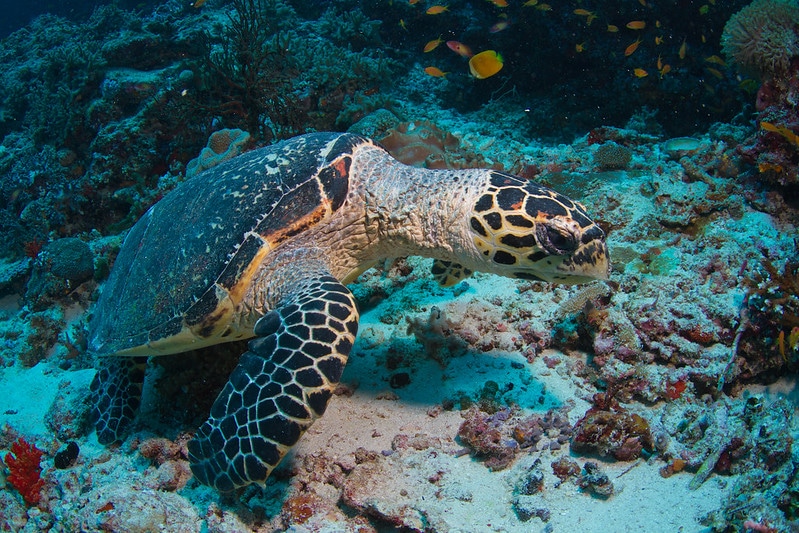
2. The Curious Case of Northeast Brazil’s Cross-Breeding Sea Turtles
Sea turtles have been around since dinosaurs roamed the Earth, stretching back about 110 million years. Yet now their existence is at risk, with six of today’s seven species classified as threatened or endangered. While efforts are ongoing to protect turtles, part of the puzzle that requires more knowledge concerns the effects of interspecies mating, or hybridization – particularly between hawksbill and loggerhead species in one area of Brazil. Hybridization has been observed in five of the world’s existing species. However, in Brazil’s northeastern state of Bahia, genetic analysis has uncovered that as many as 30 to 40% of female hawksbills at some nesting sites are, in fact, first-generation hybrids resulting from cross-breeding with loggerheads. Understanding why this is happening may be important for informing conservation efforts because hybridization can have consequences for species’ survival.

3. Pope, using Shakespeare, Makes Climate Change Appeal
Pope Francis adapted Shakespeare’s famous Hamlet quote in an appeal to people not to remain blind to the destruction of climate change and the mass migration it may cause, writing: “To see or not to see, that is the question.” Francis went on to urge people to work together to protect “creation, our common home” and not “hunker down” in individualism, in the preface of a document by the Vatican development office on the pastoral care of people displaced by climactic events. “The deteriorating climate is very often the result of poor choices and destructive activity, of selfishness and neglect, that set humankind at odds with creation, our common home,” he said. The Pope also criticized former U.S President Donald Trump when he withdrew the United States from the 2015 Paris accord to limit global warming. The Vatican has welcomed President Joe Biden’s return to the accord.
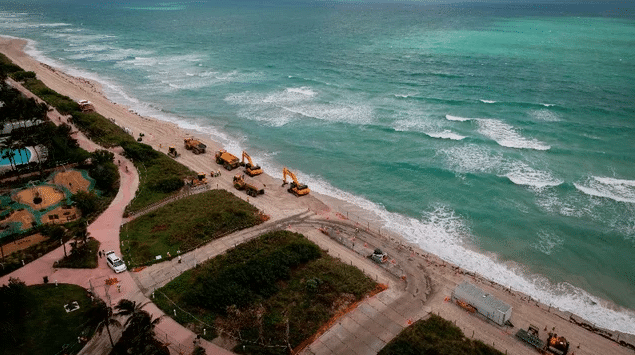
4. Lawmakers Call on Biden to Put $10 Billion Toward Coastal Restoration
Reps. Suzanne Bonamici (D-Ore.) and Bill Posey (R-Fla.) called on President Biden to commit $10 billion to coastal restoration and resilience efforts Wednesday. In a letter addressed to Biden, the representatives note that under the Obama administration, $167 million in stimulus funding was appropriated for the National Oceanic and Atmospheric Administration’s (NOAA) Office of Habitat Conservation for coastal restoration. The letter goes on to state that such projects can serve as a major economic stimulus for coastal areas, noting that projects funded by the appropriation restored more than 25,584 acres of coastal habitat. The letter further states that restoration of blue carbon ecosystems in coastal areas could keep up to a gigaton of carbon dioxide out of the earth’s atmosphere by 2050.
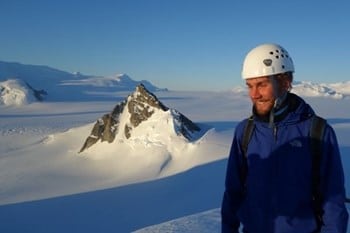
5. Evidence of Antarctic Glacier’s Tipping Point Confirmed for First Time
Researchers have confirmed for the first time that Pine Island Glacier in West Antarctica could cross tipping points, leading to a rapid and irreversible retreat which would have significant consequences for global sea level. Using a state-of-the-art ice flow model, the team has developed methods that allow tipping points within ice sheets to be identified. Currently, Pine Island Glacier is a region of fast-flowing ice draining an area of West Antarctica approximately two thirds the size of the UK. The glacier is losing more ice than any other glacier in Antarctica. Pine Island Glacier together with its neighbouring Thwaites glacier are responsible for about 10% of the ongoing increase in global sea level. Such a retreat, once started, could lead to the collapse of the entire West Antarctic Ice Sheet, which contains enough ice to raise global sea level by over three meters.
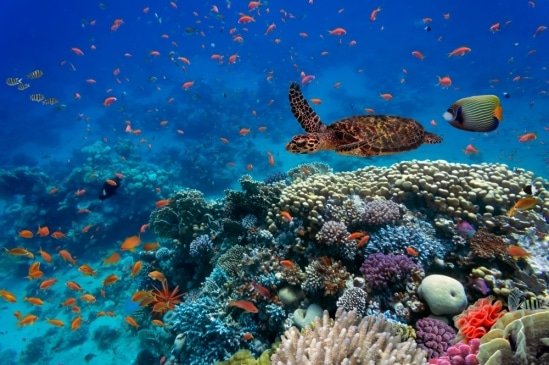
6. At-Risk Marine Biodiversity Faces Extensive, Expanding, and Intensifying Human Impacts
Despite the fact that our planet is mostly ocean and human maritime activity is more intense than it has ever been, we know remarkably little about the state of the ocean’s biodiversity. This is the first study of its kind looking at the effects of human activity on marine species, and the first looking at changes over time. Taking data on 1,271 threatened and near-threatened marine species from the International Union for Conservation of Nature and Natural Resources’ (IUCN) Red List, the researchers mapped the at-risk species along range and anthropogenic stressors from 2003-2013. “We focused on those species known to be at a higher risk of extinction because from a conservation perspective, it’s especially important to understand where and how our activities continue to jeopardize those species,” said lead author, Casey O’Hara.
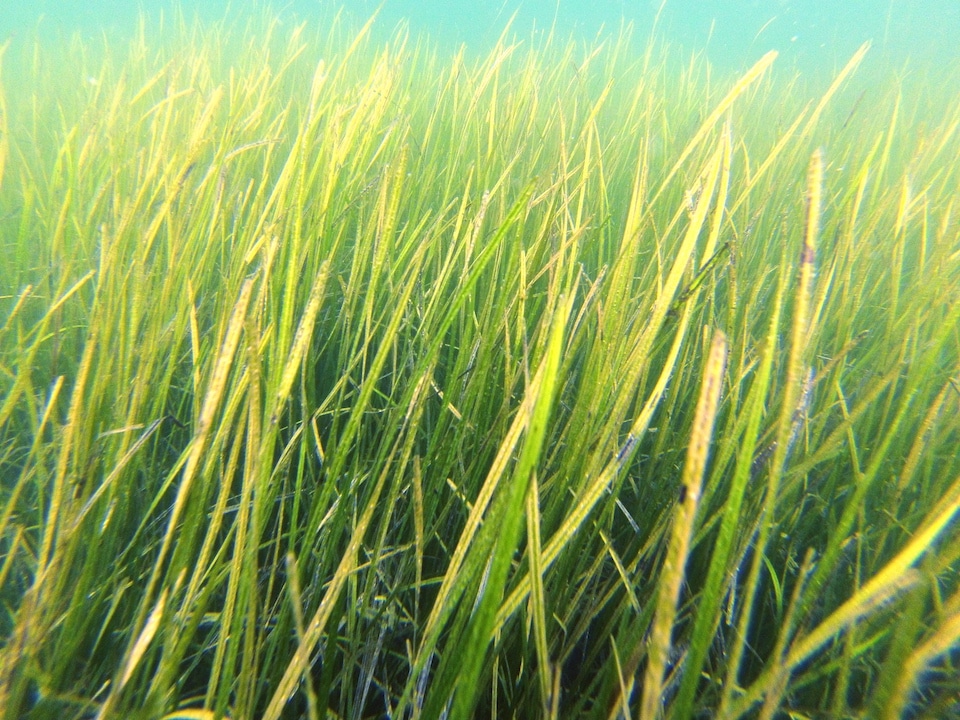
7. Seagrasses Turn Back the Clock on Ocean Acidification
Spanning six years and seven seagrass meadows along the California coast, a paper from the University of California is the most extensive study yet of how seagrasses can buffer ocean acidification. The study found that these ecosystems can alleviate low pH, or more acidic, conditions for extended periods of time, even at night in the absence of photosynthesis. It found the grasses can reduce local acidity by up to 30 percent. “This buffering temporarily brings seagrass environments back to preindustrial pH conditions, like what the ocean might have experienced around the year 1750,” said co-author Tessa Hill, a UC Davis professor. Globally, ocean acidification is on the rise while seagrass ecosystems are in decline. As more carbon dioxide is emitted on the planet, about a third is absorbed by the ocean. The study carries implications for aquaculture management, as well as for climate change mitigation and conservation and restoration efforts.
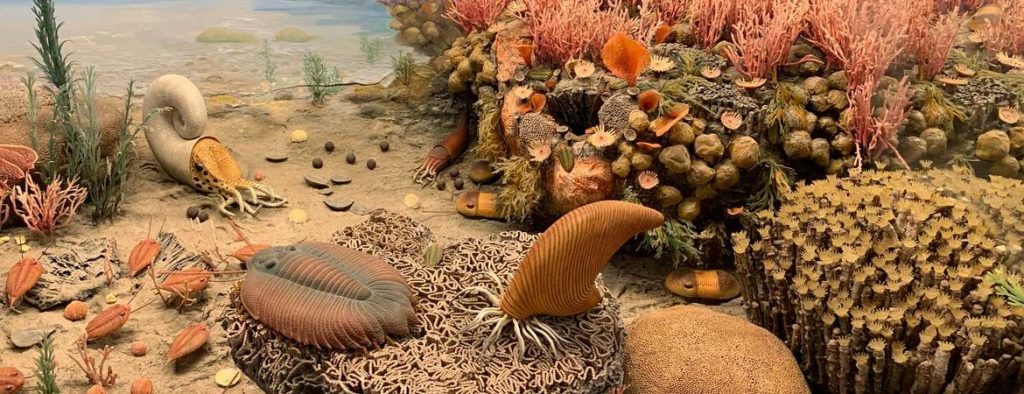
8. Uncovering the Bizarre Breathing Organs of the 450-Million Year-Old Trilobite
A new study has found the first evidence of sophisticated breathing organs in 450-million-year-old sea creatures. Contrary to previous thought, trilobites were leg breathers, with structures resembling gills hanging off their thighs. “Up until now, scientists have compared the upper branch of the trilobite leg to the non-respiratory upper branch in crustaceans, but our paper shows, for the first time, that the upper branch functioned as a gill,” said Jin-Bo Hou, a UCR paleontology doctoral student who led the research. Among the oldest animals on earth, this work helps situate trilobites on the evolutionary tree more securely in between older arthropods, a large group of animals with exoskeletons, and crustaceans. The research was possible, in part, because of unusually preserved fossil specimens. There are more than 22,000 trilobite species that have been discovered, but the soft parts of the animals are visible in only about two dozen.
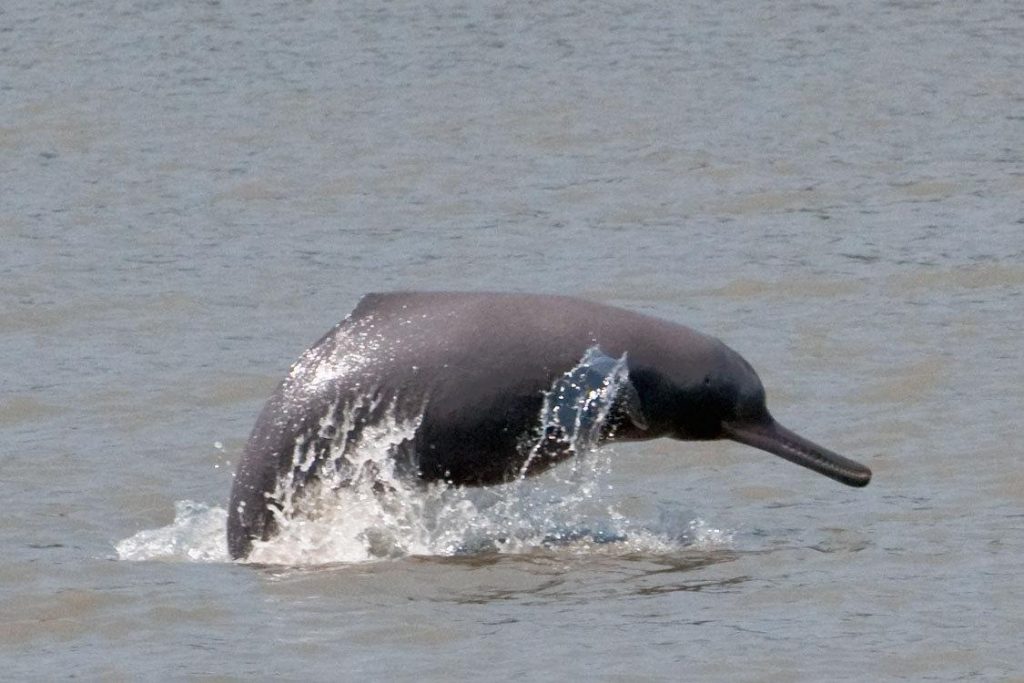
9. Landmark Research Shows Endangered River Dolphins in Asia Two Different Species
New genetic analysis and years of painstaking research has revealed that one of the world’s most endangered marine mammals is actually two species rather than one, as scientists had long assumed. Scientists spent about two decades crossing Asia and Europe in pursuit of river dolphins skulls and reexamining tissue samples with modern genetic techniques. Their findings revealed that Indus and Ganges river dolphins are separate species, according to a new study. The two dolphins that live in the muddy waters of the Ganges and Indus rivers have lost their eyesight and rely on sophisticated sonar to hunt for prey. The new research recognized that the dolphins have clear genetic differences, as well as different numbers of teeth, coloration, growth patterns and skull shapes. Together, these differences distinguish them as separate species.

10. Tilapia Farming: Dwarfism Is a Response to Overcrowding Stress
A new study explains that while most fishes die when stressed, tilapias survive in rough environments by stunting and carrying on with their lives in dwarf form. As it happens with other fishes, when tilapia’s metabolism accelerates, it needs more oxygen to sustain its body functions. But the interaction between an increased metabolism and a growing body leads to gills reaching a point where they cannot supply enough oxygen for a larger body, so the fish either dies or just stops growing. “This tells us that tilapias in stressful conditions don’t spawn ‘earlier,’ they just adjust their size downward, but their life cycle continues. These findings will matter to fish farmers, notably in Asia, whose ponds are often full of wildly reproducing, small tilapia for which there is no market” said the authors of the study.
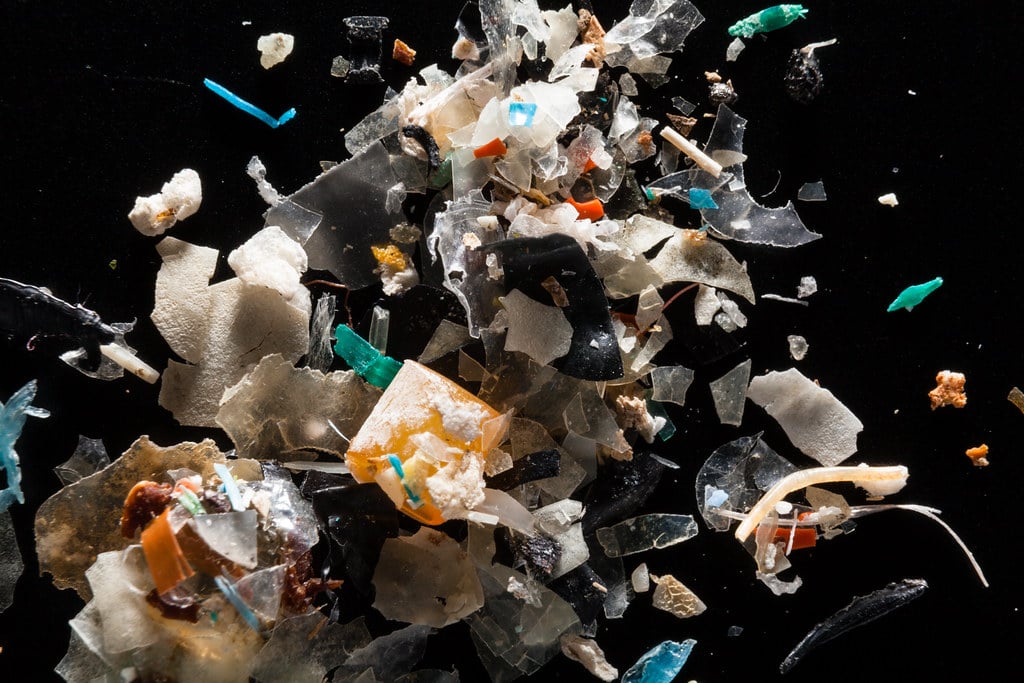
11. Microplastics Are Affecting Melt Rates Of Snow And Ice
Microplastics have reached the farthest corners of the Earth, including remote fjords and even the Mariana Trench, one of the deepest parts of the ocean. Recently, yet another distant area of our planet has been found to contain these pollutants: glaciers and ice sheets. Most often, microplastics end up in snow via airborne deposition. They tend to be lighter than dust particles and due to their shape, can remain airborne and gain enough altitude to circulate with large-scale weather and be transported to faraway places. In addition, another form of pollution which also collects on snow is black carbon. Black carbon particles come from the combustion of fossil fuels by humans as well as from natural sources such as forest fires. Because of their dark color, black carbon particles absorb sunlight and heat the surfaces they land on, increasing melt rates of snow and ice.
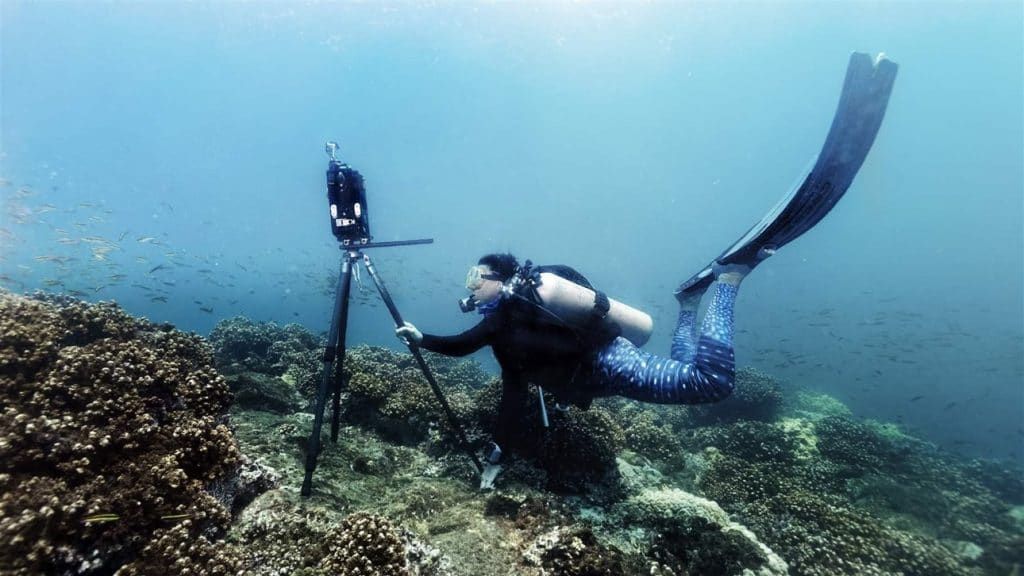
12. Pew Names Nine Marine Fellows to Advance Global Ocean Conservation
Nine distinguished conservation researchers from around the world have been named 2021 recipients of the Pew fellowship in marine conservation. From studying the ecological and socioeconomic benefits provided by coastal habitats to improving shark conservation and coral reef restoration practices, the new fellows will undertake a broad range of projects to deepen our knowledge of the ocean and advance the sustainable use of marine resources. For 25 years, the Pew Fellows Program in Marine Conservation has supported mid-career scientists and other experts seeking solutions to problems affecting the world’s oceans. Fellows are selected by an international committee of marine science experts following a rigorous nomination and review process. Each fellow receives $150,000 over three years to address some of the most critical challenges facing the marine environment. Pew has recognized 189 marine fellows from 40 countries since the start of the program.
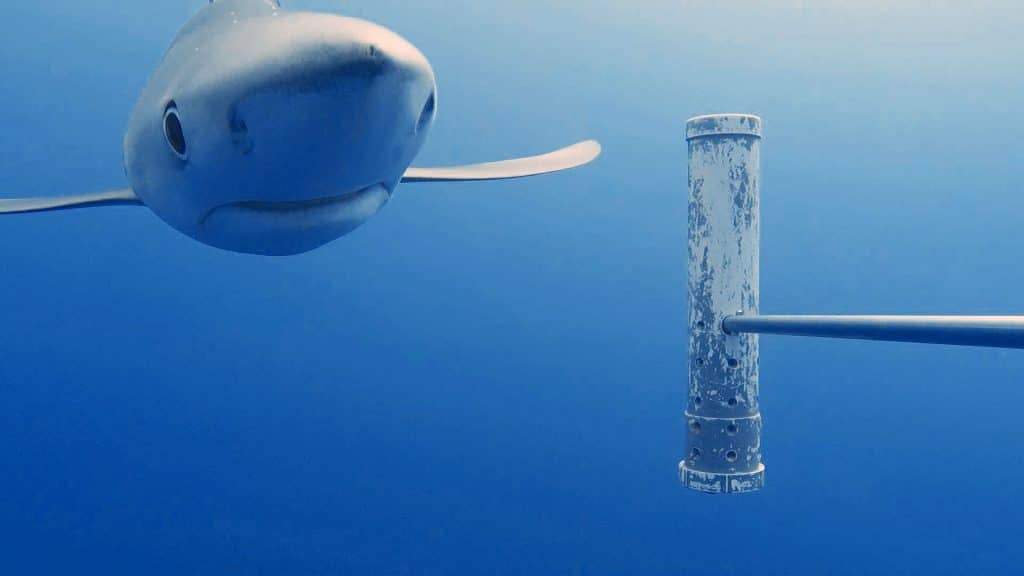
13. Shark Feed: U.K. Launches World’s Largest Underwater Monitoring System
The United Kingdom will install the world’s largest network of underwater wildlife monitoring systems in 10 overseas territories in the next few months to measure the success of its ocean conservation efforts, the government said Friday. A network of cameras on carbon fiber sticks will monitor more than 4 million square kilometers of ocean in the largest undertaking of its kind by any national government. The project is backed by the U.K. government, which hopes to learn which of its ocean conservation efforts are paying off or whether it needs to invest more in protecting marine wildlife. “Cutting-edge technology, such as these cameras, will be vital in our crusade against climate change,” Prime Minister Boris Johnson said in a statement. “Our marine experts are world-leaders in protecting our ocean and the myriad of species that live within it.”

14. Odyssey Marine Exploration Reports Full Year 2020 Results and Updates Current Projects
Odyssey Marine Exploration, Inc., a deep-ocean exploration pioneer engaged in the discovery, validation and development of subsea minerals deposits in an environmentally responsible manner, reported results for the full year ended December 31, 2020, and provided an update on current projects and future plans. A key objective in 2020 was identifying and securing capital to fund the needs of the company and their subsidiaries through 2021 and into 2022. During 2020 Odyssey worked on further developing the value of two highly prospective subsea mineral projects, CIC and Lihir Subsea Gold. The company is also actively developing new projects through its proprietary Global Prospectivity Program, with the goal of identifying new, highly valuable, and societally significant subsea resources. In 2021, they expect to receive regulatory outcomes providing permits enabling them to carry out planned exploration programs that could significantly enhance the value of one or more of their portfolio projects.
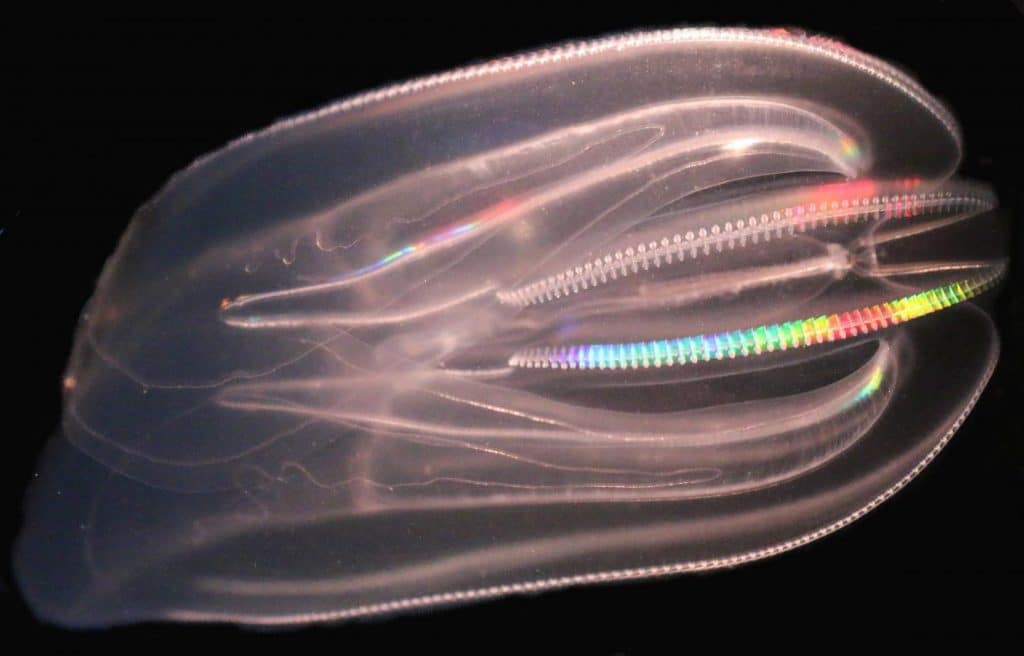
15. Aquatic Invasive Species Cause Damage Worth Billions of Dollars
The global movement of goods and people, in its modern form, has many unwanted side effects. One of these is that animal and plant species travel around the world with it. Often they fail to establish themselves in the ecosystems of the destination areas. Sometimes, however, due to a lack of effective management, they multiply to such an extent in the new environment that they become a threat to the entire ecosystem and economy. Economic costs occur, for example, when invasive species decimate commercially exploited fish stocks, spread deadly diseases or damage infrastructures. Thousands of alien species are currently documented worldwide. A quarter of them are in highly vulnerable, aquatic habitats. The conclusion made was that invasive aquatic species that have established themselves in their new habitats have cost at least 345 billion US dollars since the 1970.

16. Canada’s Herring Facing ‘Biological Decimation’, says First Nations and Activists
First Nations and conservationists are warning that Pacific herring populations are “collapsing” off Canada’s western coast, and are appealing for a moratorium on commercial fishing until the critical species can rebuild. A recent report by Pacific Wild concludes that the Pacific herring fishery is unsustainable and warns that if the government continues to allow fishing at the current level, “herring along Canada’s west coast will teeter on the edge of complete collapse”. The small, oily fish are a key food source for various species along the coast including Chinook salmon, which are in turn the main food source for endangered southern resident killer whales. First Nations said in a statement that for the third year in a row, community members will need to purchase herring roe from other nations instead of harvesting it themselves, out of concern for dwindling herring numbers.
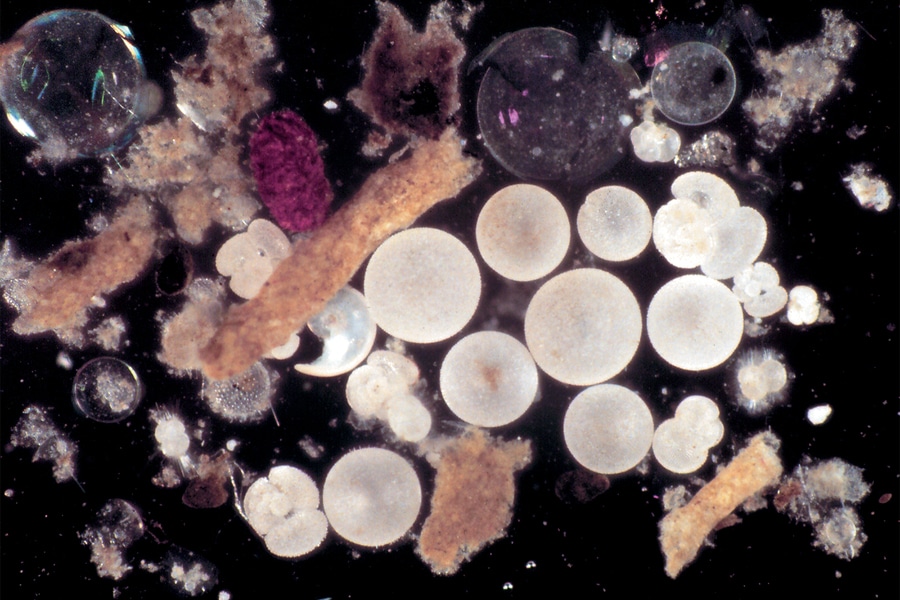
17. Study Reveals Uncertainty in how much Carbon the Ocean Absorbs Over Time
The ocean’s “biological pump” describes the many marine processes that work to take up carbon dioxide from the atmosphere and transport it deep into the ocean, where it can remain sequestered for centuries. This ocean pump is a powerful regulator of atmospheric carbon dioxide and an essential ingredient in any global climate forecast. But a new MIT study points out that the “gold standard” equation used to calculate the pump’s strength has a larger margin of error than previously thought, and that predictions of how much atmospheric carbon the ocean will pump down to various depths could be off by 10 to 15 parts per million. If current models predict we have until 2040 to cut carbon emissions, we’re expanding the uncertainty around that, to say maybe we now have until 2035, which could be quite a big deal.

18. Florida Crews are Pumping Wastewater into Tampa Bay to Avoid a Full Reservoir Breach
After a leak in the liner of a reservoir caused a partial breach in one of its containment walls, officials hope that pumping millions of gallons of wastewater out of the reservoir and into the Tampa Bay ecosystem will relieve pressure on the walls and reduce the chance of an uncontrolled major breach. More than 300 hundred homes and multiple businesses have been evacuated in the area around Piney Point, a former phosphate plant. The biggest concern with the wastewater that is being released into Tampa Bay is high level nutrients like phosphorus and nitrogen, which can feed red tide. If a red tide were to occur it could lead to environmental complications such as low oxygen levels that can lead to fish kills. Other concerns include the nutrient-rich water being released may cause harmful algae blooms.
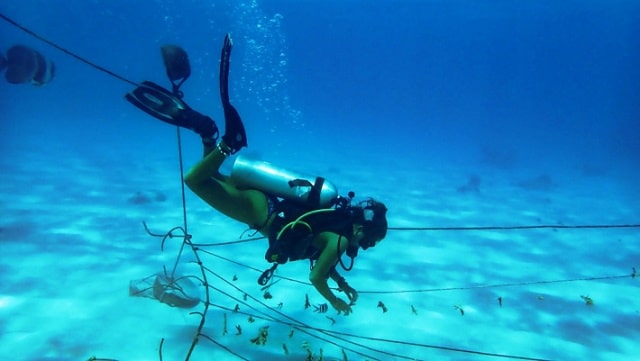
19. Seychelles is Restoring is Coral Reefs
The Marine Conservation Society Seychelles (MCSS) has embarked on a major project to restore 0.5 hectares of degraded coral reef around Ste Anne Marine National Park (SAMN). The project goal is to improve food security and livelihoods while mitigating the effects of coastal erosion. It is under the wing of a regional project named ‘The Restoring Marine Ecosystem by Restoring Coral Reefs to Meet a Changing Climate Future’, which was taken on by Seychelles and Mauritius and has a total cost of $2.5 million. To restore the reef to its natural functions, a team of four will use the method of coral gardening. This is done by harvesting pieces from donor colonies or wild populations and putting them in a nursery where they grow for 9-12 months before implantation. MCSS has a total of six nursery, two of which are located at SAMN.

20. Canada Continues International Ocean Research Partnership
The Canadia Consortium for Ocean Drilling (CCOD) and Memorial University, the home institute for CCOD, will continue their participation in the International Ocean Discovery Program (IODP) until at least 2023. The IODP is a unique 50 year old collaborative network of geoscience researchers from 23 nations. Dr. John Jamieson, Chair of Marine Geology at Memorial, says international collaboration provides unmatched opportunity for marine geoscientists. The research collected from IODP has been published in over 800 peer-reviewed scientific articles and is used by over 150 Canadian based scientists. At Memorial, 15 researchers have used IODP data as part of their research programs, including climate change, plate tectonics, limits of life on and within Earth, ocean circulation, and more. A renewed membership also means Canada will be more equipped to implement the IODP’s 2050 Science Framework.
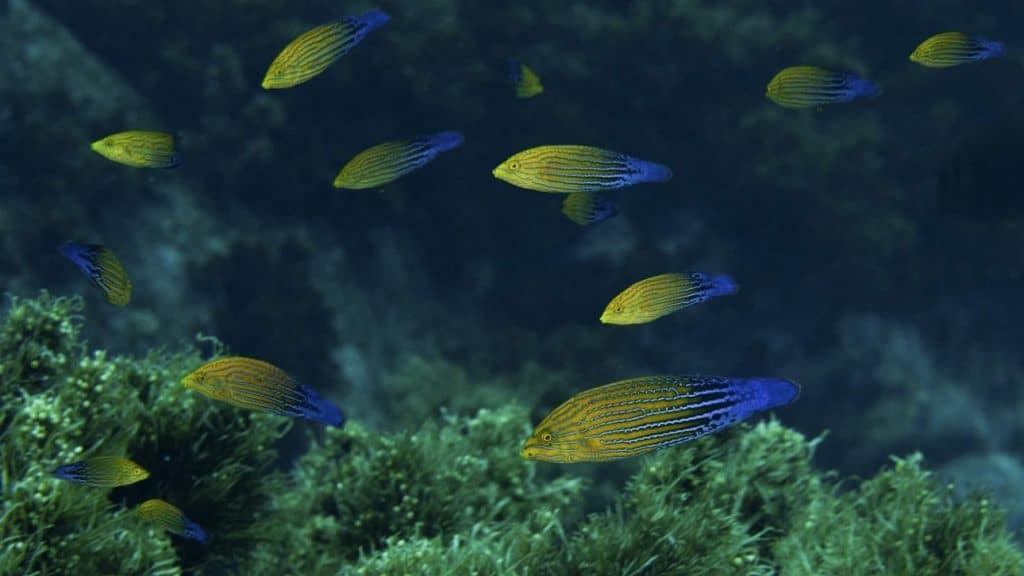
21. A Call to France to Protect More Than 30% of its Oceans
Today, 70 countries have committed to protecting 30% of it’s ocean waters by 2030. France has been considered a global leader in marine protected areas (MPA) implementation, but experts call for the need for much more. The country has the world’s second largest exclusive economic zone (EEZ), covering 4,514,000 square miles; this includes French Polynesia, New Caledonia, and French Southern and Antarctic Lands (TAAF). Currently, 23.5% of French waters are protected, but only 2% are highly protected and 80% is in the single territory of: TAAF. Additionally, many of France’s MPAs allow extractive activities. This is of concern to exports as it does not offer enough protection for seagrass beds and reefs, which are crucial coastal buffers and prevent coastal erosion. There is also concern in protecting mangrove forests for their role in capturing and storing carbon dioxide.

22. Human Contribution of Beached Marine Animals
Thousands of whales, dolphins, and other marine animals end up on beaches around the world each year. Cetacean Strandings Investigation Programme (CSIP) has logged more than 12,000 incidents since 1990. Scientists have been trying to figure out what causes the animals to beach themselves. They have found topography and natural causes are to partially blame, but so are humans. Oftentimes, human activity is paired with causes of topography and what at first appears to be a natural cause, such as attempting to avoid noisy waters. Additionally, when animals get entangled in fishing gear and die or are injured, they get pulled ashore due to the tides. Overfishing has also caused a lack of food resources for many species, leading them to venture into coastal or tidal areas to hunt. Plastic and chemical pollution is another cause as it increases the probability of death.

23. Sharks Are in Trouble — Without Them, Entire Ecosystems May Disappear
A recent study found that in the last 50 years, populations of 18 shark and ray species have declined by a staggering 70%, and half of all open ocean shark species are endangered or critically endangered. The oceanic whitetip shark population has declined by 98% in the last 60 years, spotting a reef shark in its natural reef habitat is now a rare occurrence, and in the Galapagos alone 90% of shark species are listed on the IUCN Red List. Sharks are apex predators and keystone species, playing a significant role in balancing the ecosystem. A well-balanced marine food web is essential for species abundance and diversity, both of which make for healthier ecosystems. The overfishing of large shark species has cascading negative effects that all fishers and communities should be concerned about. Where sharks are in decline, we are seeing big changes in marine food webs.
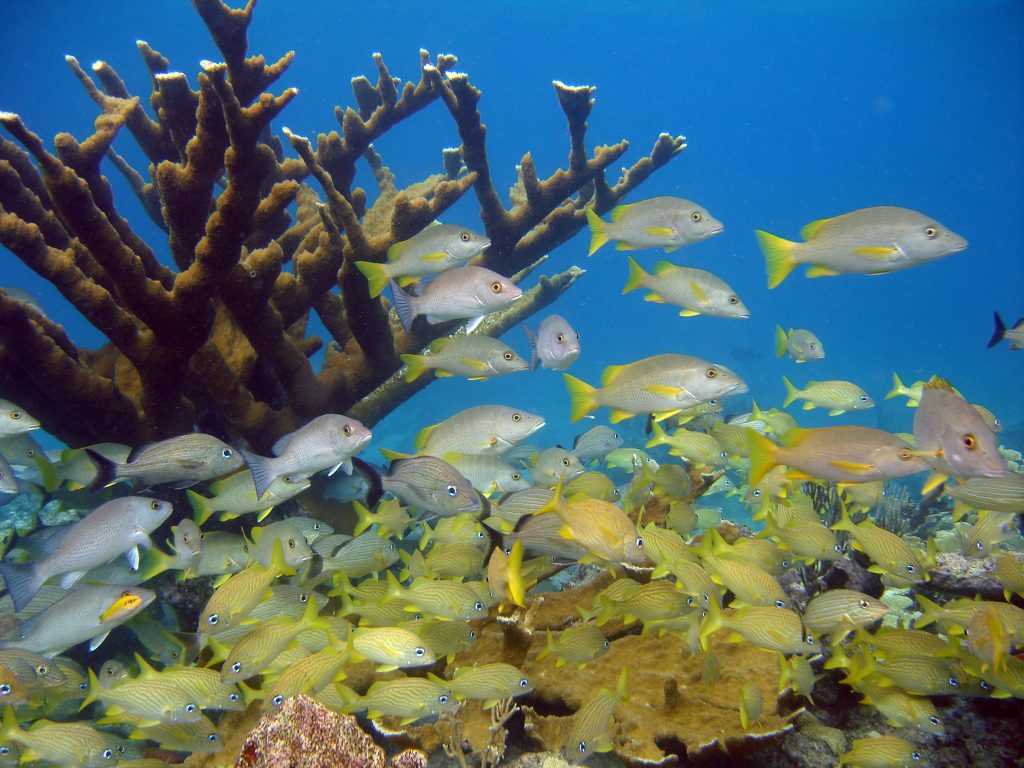
24. Marine Protected Area Expansion in the Cayman Islands
The Cayman Islands Department of Environment (CIDoE), with help from the UK government’s Darwin Initiative, first started talking with local communities about expanding its existing Marine Protected Area (MPA) network over a decade ago. And despite various threats to their ambition (including a global pandemic), as well changes of government, the new enhanced MPA network they championed has finally come into force this month! Now about 48% of their shelf waters are designated as no-take zones – and this huge result is testament to the resilience of the CIDoE as well as Caymanian communities and other partners in getting this inspirational work over the line. Cayman’s marine wildlife is in safe hands, and now that huge areas of habitat are fully protected, the future looks a lot better for Cayman’s marine ecosystems and the people that depend on them.
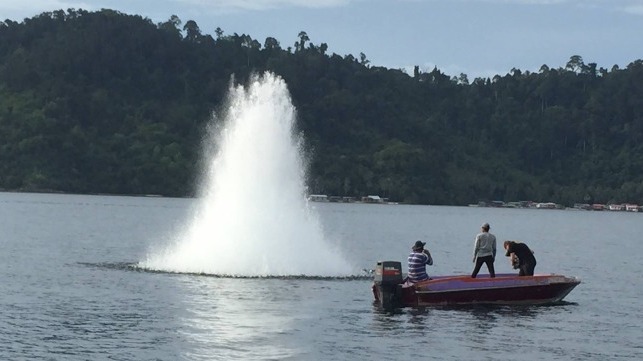
25. Tackling Fish-Bombing at Malaysia’s Vulnerable Coral Reefs
Fish-bombing is the stuff of nightmares for the diving industry in Sabah state, Malaysian Borneo. Not only does it put off the tourists, it also devastates marine life and endangers the fishers themselves. Bottles, usually containing a mix of ammonium nitrate fertilizer and petroleum, are fitted with a timed fuse and dropped into the water. The ensuing explosion kills or stuns fish, which are then scooped out of the water. It is also known as blast or dynamite fishing. Action to address the practice has been ongoing for at least 16 years across several Asian countries. In Sabah, this action has intensified in the last six years as tourism has become increasingly central to the state’s economy and coastal communities. Programs have been run by various concerned stakeholders and the government-led Anti-Fish Bombing Committee. As a result, there has been a decline in the practice in Sabah.
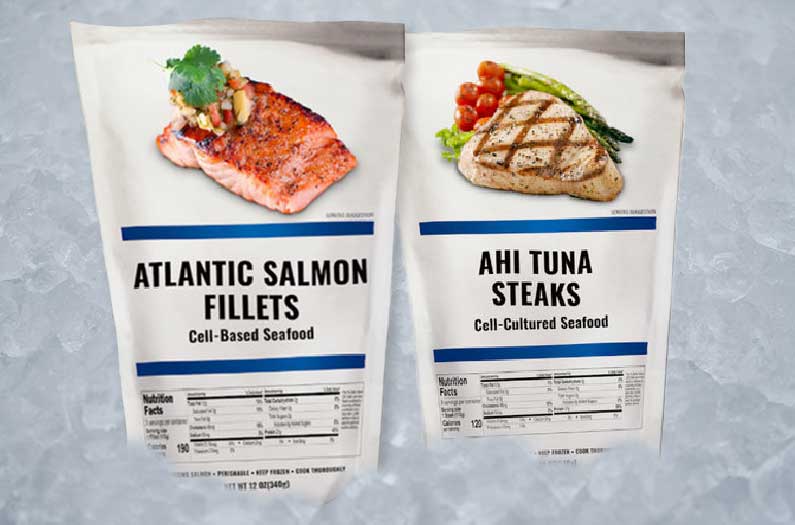
26. Lab-Cultured Seafood Is Coming, but Can It Actually Relieve Pressure on Global Fisheries?
We’ve heard plenty about cultured beef burgers and lab-grown chicken breasts in the last few years. But what about cell-based seafood? Proponents of this emerging industry argue that diverting human appetites from wild-caught fish, to seafood grown in a lab, could be one way to ease pressure on global fisheries and replenish fish stocks. That’s the premise on which this innovative technology is built. To find out if switching to cultured seafood would be a better bet for the planet, the team of international, cross-disciplinary researchers mapped out nine key steps they believe this industry would have to achieve. At each stage, they delved into the potential and the challenges of cell-based seafood. The steps included developing the new product, getting it to market, making it cost-competitive, and getting consumers to willingly substitute it for wild-caught fish.
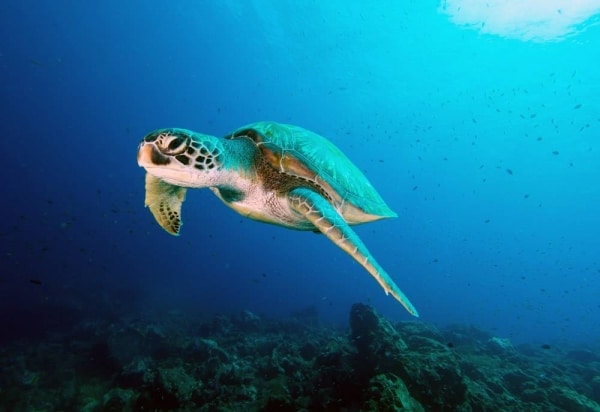
27. Extreme E Reveals Red Sea Conservation Initiative
Extreme E, an electric off-road racing series, has revealed its Legacy Program plans in Saudi Arabia, confirming it will support turtle conservation along the Red Sea coastline in association with Ba’a Foundation, an organization that focuses on preserving endangered species, natural habitats and historical sites. “The Red Sea is home to some of the most diverse ecosystems in the world and we have worked closely with the Ba’a Foundation to identify this important project based around endangered sea turtle conservation; a truly worthy and exciting initiative that will start receiving our support immediately.” Extreme E will support the protection of the endangered Green turtle and the critically endangered Hawksbill turtle through beach fencing, beach management and monitoring, careful nest relocation andimprovements such as raising the level of the beaches to a suitable height with imported sand for turtle nesting and successful egg hatching, as well as education.
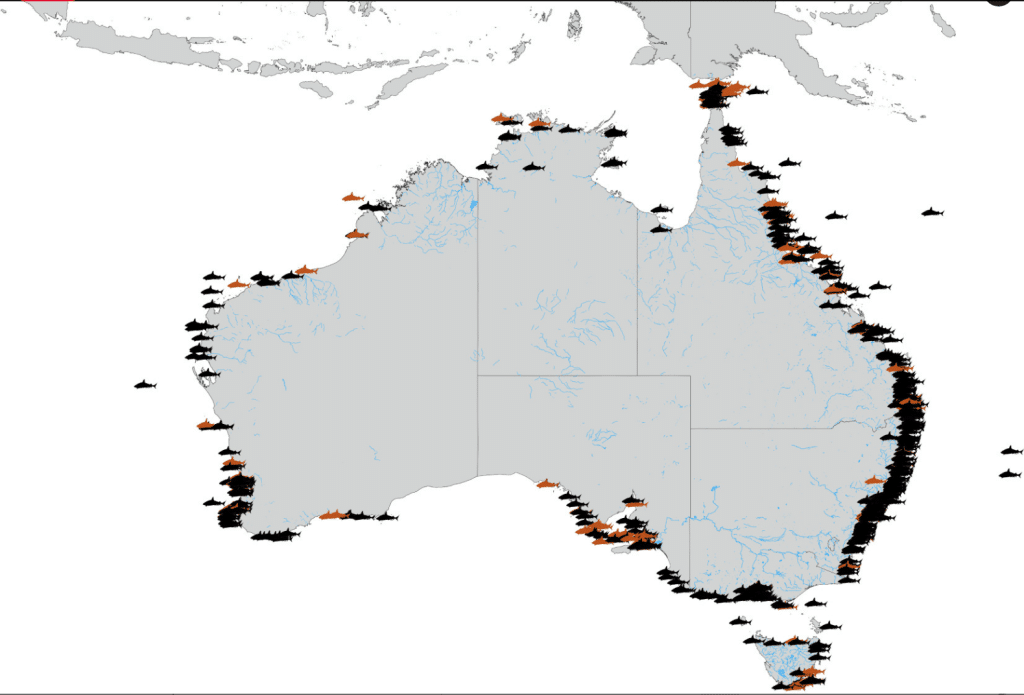
28. Electronic Devices can Repel Sharks and Save Lives
Researchers are looking into systematic use of electronic devices designed to repel sharks which could prevent more than 1,000 people from being bitten by the apex predators in Australian waters over the next five decades. If extended to other regions, the potential for avoiding injury and death is far higher, they reported in the journal Royal Society Open Science. Projecting those changes into the future, along with predicted increases in population, the scientists tallied the number of bites that could be avoided if surfers, swimmers and divers all wore electronic shark deterrents. “If fewer people have negative incidents with sharks, then the incentive to kill ‘problem’ sharks either directly through hunting or with beach nets and drumlines could be reduced,” Bradshaw said. It would become a win-win for both humans and sharks.
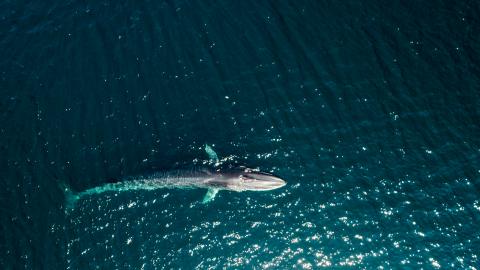
29. New England’s Marine Protected Coast Analyzed to Determine Economic Impact of Commercial Fishing
The Northeast Canyons and Seamounts Marine National Monument is a nearly 5,000 square mile marine protected area off the coast of New England. The area includes four underwater mountains and three deep-sea canyons, along with numerous unique and endangered marine species. In June 2020, former President Trump signed a proclamation to open it up to commercial fishing. Conservation Strategy Fund (CSF) is conducting an analysis to determine the effect of the closure, and determine the economic impact of the marine national monument on highly migratory species. Next, the study will examine the economic impact of re-opening the monument to commercial fishing. President Biden directed the Department of Interior to review the protected area, and provide recommendations for actions to take by March 2021. Therefore, this analysis has become exceptionally time-sensitive and has the potential to immediately influence policy.

30. Is Failure in Leadership and Politics to Blame for Climate Action in Australia?
A report by the Australian Academy of Science has brought into focus once again how critical and urgent climate action is for the future of our Great Barrier Reef. The report, which examines the risks to Australian landscapes including our Reef of a 3°C warmer world, is worrying for all Australians and particularly the people in the tourism industry who depend on it for their livelihoods. In this context, the fact that we still don’t have a national climate policy from our politicians, including targets on net-zero emissions, detail on how Australia will transition fairly to renewable energy, and global leadership on climate action, is shameful. It is worth fighting for and it is worth doing everything we can to secure the future of the remaining corals of the Great Barrier Reef.
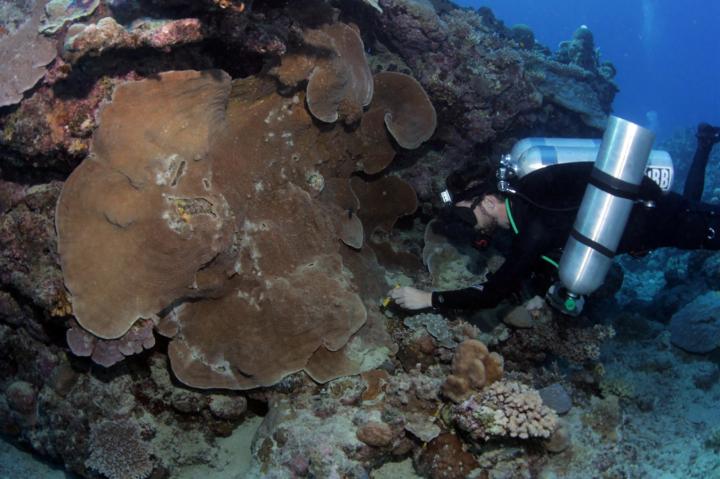
31. Expansion of Coral Classification Required to Protect Reefs and Ecological Diversity
In recent years, advancements in DNA sequencing have exposed a large amount of hidden diversity in reef-building corals: species that appear identical to one another but are genetically distinct. Typically ignored as they are invisible to the naked eye, a team of researchers at the California Academy of Sciences and The University of Queensland, along with over a dozen international collaborators, is taking a more holistic approach to understand these hidden species by investigating overlooked ecological differences that have wide-ranging implications for the vulnerability and resilience of reef-building corals. The team hopes that their findings will lead to a more nuanced consideration of coral diversity, to drive more strategic conservation planning. Ultimately, the researchers hope that their findings reveal the importance of taking a holistic approach to understanding these hidden species that appear identical, but may be harboring key differences that impact global conservation efforts.




